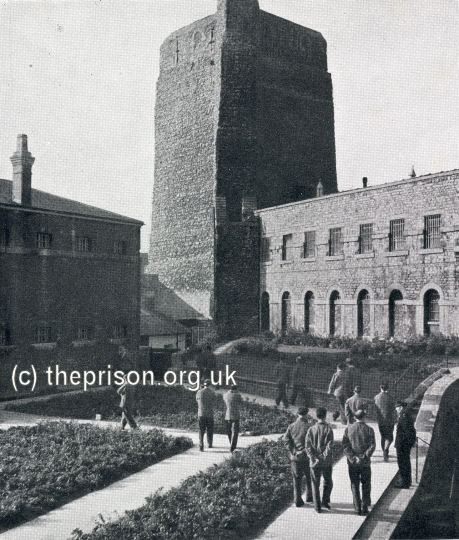County Gaols
In 1166, Henry II issued an Act known as the Assize of Clarendon. The Assize is often credited with laying down the origins of the jury system by setting up a grand or 'presenting' jury in each district which was to notify the King's roving judges of the most serious crimes committed there. Clause 7 of the Assize also provided a significant impetus to the use of prisons — it decreed that the sheriff of each county was required to erect a county gaol if none already existed, with the cost being met by the Crown.
By 1216, fifty years after the Assize of Clarendon, county gaols existed in all but five English counties. They were often located in existing buildings, particularly castles, in county towns. Where this was not possible, new buildings were constructed either in the county town, as at Warwick, or some other town, such as Buckinghamshire's gaol at Aylesbury. Responsibility for running the county gaol lay with the county sheriff, a servant of the crown.

Oxford's County Gaol was built within the town's Norman castle. © Peter Higginbotham
During the Middle Ages, twenty towns and cities (Berwick-upon-Tweed, Bristol, Canterbury, Chester, Coventry, Exeter, Gloucester, Kingston upon Hull, Lichfield, Lincoln, City of London, Newcastle upon Tyne, Norwich, Nottingham, Poole, Southampton, Worcester, York) acquired the status of "county corporate", making them administratively independent of their surrounding county. These places were formally referred as "The County of the Town/City of...". This can sometimes cause confusion. For example, the "Nottingham Town and County Gaol" is a quite separate establishment from the Nottinghamshire County Gaol, though both were located close to one another in Nottingham.
Bibliography
- Higginbotham, Peter The Prison Cookbook: A History of the English Prison and its Food (2010, The History Press)
- Brodie, A. Behind Bars - The Hidden Architecture of England's Prisons (2000, English Heritage)
- Brodie, A., Croom, J. & Davies, J.O. English Prisons: An Architectural History (2002, English Heritage)
- Harding, C., Hines, B., Ireland, R., Rawlings, P. Imprisonment in England and Wales (1985, Croom Helm)
- McConville, Sean A History of English Prison Administration: Volume I 1750-1877 (1981, Routledge & Kegan Paul)
- Morris, N. and Rothman, D.G. (eds.) The Oxfod History of the Prison (1997, OUP)
- Pugh R.B. Imprisonment in Medieval England (1968, CUP)
Links
- Prison Oracle - resources those involved in present-day UK prisons.
- GOV.UK - UK Government's information on sentencing, probation and support for families.
Except where indicated, this page () © Peter Higginbotham. Contents may not be reproduced without permission.



